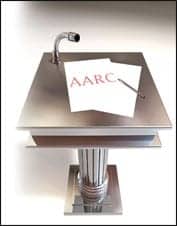A sleep specialist responds to questions about managing care for women with narcolepsy who are of childbearing age.
Interview by Lisa Spear
One practical way in which the narcolepsy journey varies between the sexes is that women of childbearing age have the added considerations of the potential impact of narcolepsy and its therapies on pregnancy, breastfeeding, and hormonal birth control.
Sleep specialist Lynn Marie Trotti, MD, MSc, of Emory Healthcare shares some insights on managing care for people with narcolepsy with childbearing potential. She recommends www.hypersomniafoundation.org/parenthood as a resource for additional information on this topic.
What are the challenges of managing care for women with narcolepsy who are of childbearing age?
Trying to decide what to do about narcolepsy treatment during conception, pregnancy, and breastfeeding is a major challenge to people with childbearing potential who are living with narcolepsy.
None of the medications we use to treat narcolepsy are known to be safe in pregnancy, and there is accumulating data that some, like modafinil, are likely unsafe. So, some women will choose to discontinue narcolepsy treatment prior to trying to conceive and remain off of narcolepsy medications throughout pregnancy.
However, when thinking about risks of medications during pregnancy, I think it is also really important to think about the risks of not taking medication during pregnancy. For some people with narcolepsy, stopping all medications during pregnancy may result in an unacceptable, unsafe level of daytime sleepiness, resulting in the inability to safely drive and manage work and family responsibilities. For patients with severe cataplexy, similar issues may arise when unmedicated. So, the decision about whether or not to take medication needs to consider both types of risks, those of taking and those of not taking medication.
If a woman decides some medication during pregnancy is necessary, then a careful discussion about what is known or not known about the risks of each medication is critical, to decide what medication would be best. In these cases, it is much better to have the discussion about what to do during pregnancy before conception, rather than after, so medications can be changed prior to pregnancy to limit exposures. Women taking narcolepsy medications during pregnancy would also want to take the lowest dose necessary, and some women may choose to avoid medication for the first trimester but not subsequent trimesters.
When discussing these issues, I also generally recommend women consider a pre-conception consultation with their ob-gyn to discuss these same questions because obstetricians have much more experience managing medications during pregnancy than sleep physicians do.
There is very, very limited data available about medications and breastfeeding, and so the decision about what to do about breastfeeding is also a challenging one. People who were able to stop medications before and throughout pregnancy may be able to remain off medications during breastfeeding. Some people will choose to formula feed instead of breastfeeding, so they can resume necessary medications postpartum. For women who need to take medication during breastfeeding, a discussion of what is known and not known about each medication and breastfeeding is critical, so an informed decision can be reached.
How do certain narcolepsy drugs interfere with oral contraceptives?
Modafinil, armodafinil, and pitolisant all interact with hormonal contraception and hormonal therapies. The interaction is through cytochrome P450 3A4, for which modafinil and armodafinil are major inducers and pitolisant is a minor inducer, resulting in faster metabolism of the hormonal therapy.
This means that people taking hormonal medications for pregnancy prevention may have a higher contraception failure rate and people taking hormonal medications for non-narcolepsy symptoms or gender-affirming care may not receive the same effective dose as they did prior to starting the interacting medication.
The decision of how to navigate this interaction varies considerably from person to person, depending on why they are on hormonal medication, what other narcolepsy medications may be available to them, their preferences for contraceptive options, and so on. But in general, we consider changing to a different, highly reliable form of birth control (such as an IUD), adding a second, non-hormonal form of birth control (such as condoms) to the hormonal contraception, increasing the dose of hormones (when appropriate), or using a medication to treat narcolepsy that doesn’t have this interaction.
Photo 7147398 © Newphotoservice | Dreamstime.com



